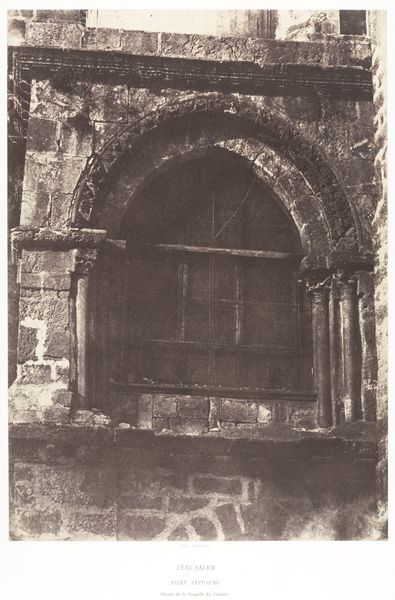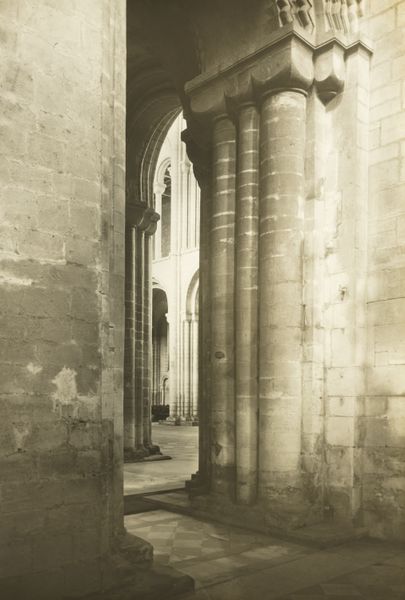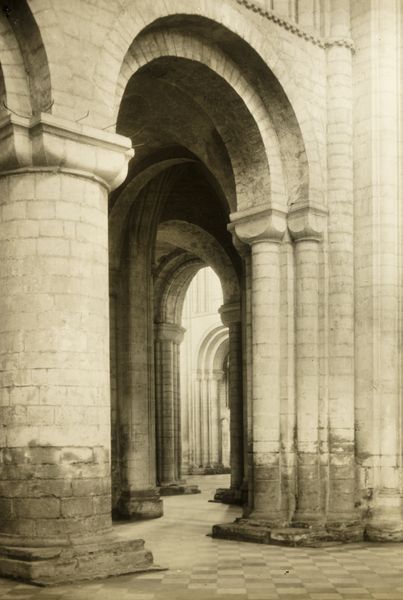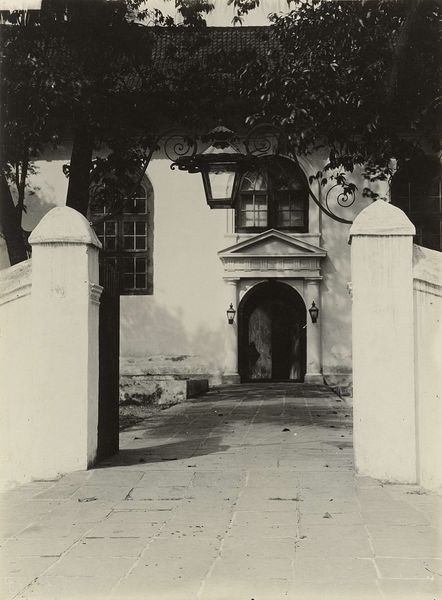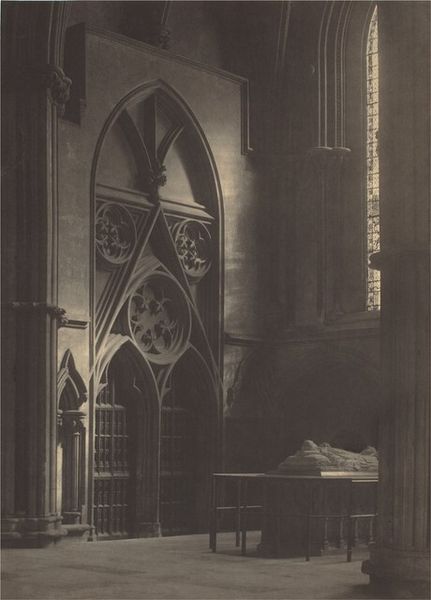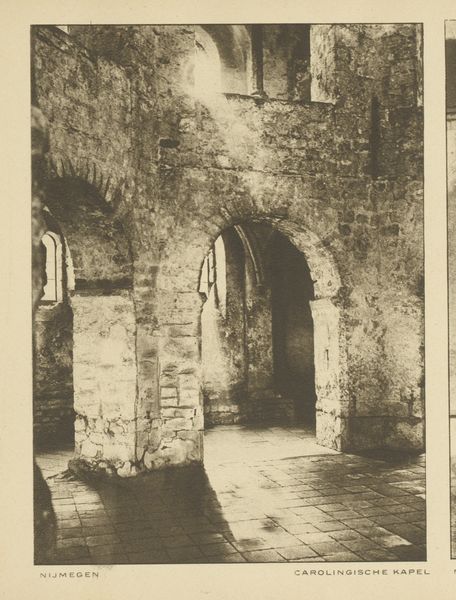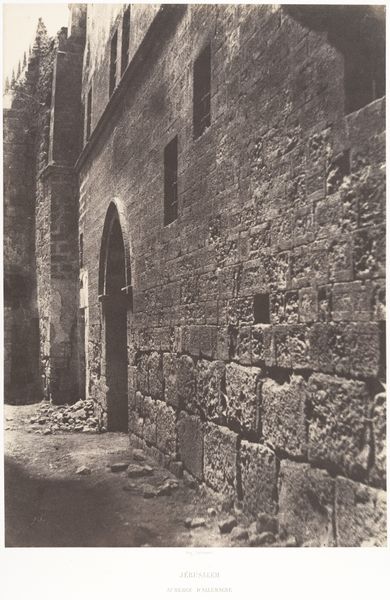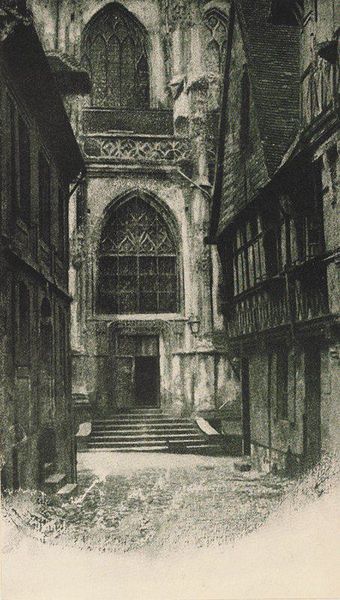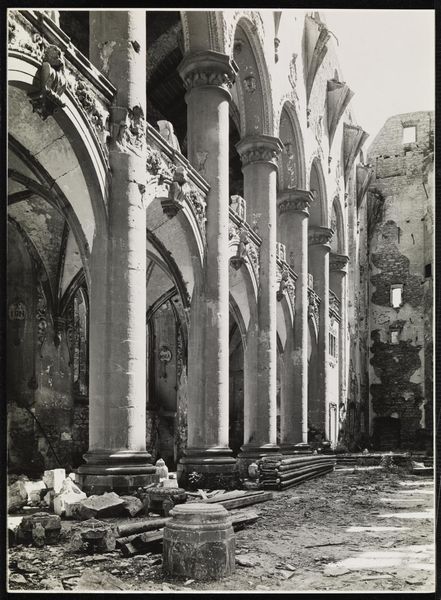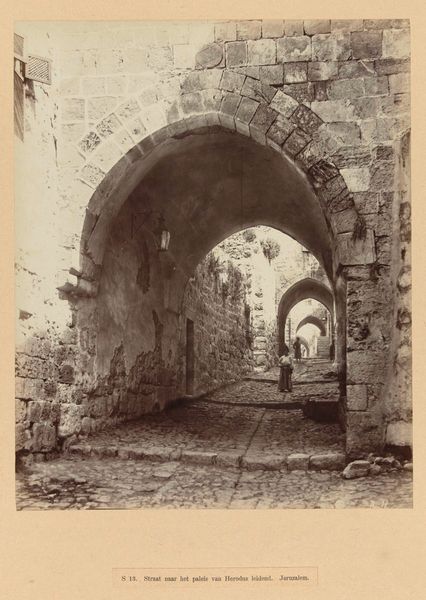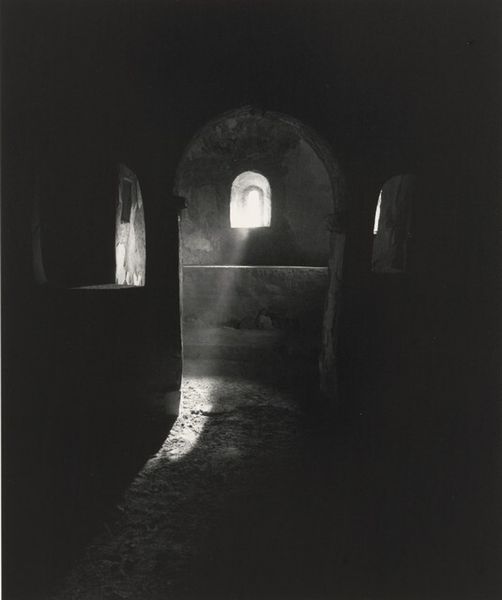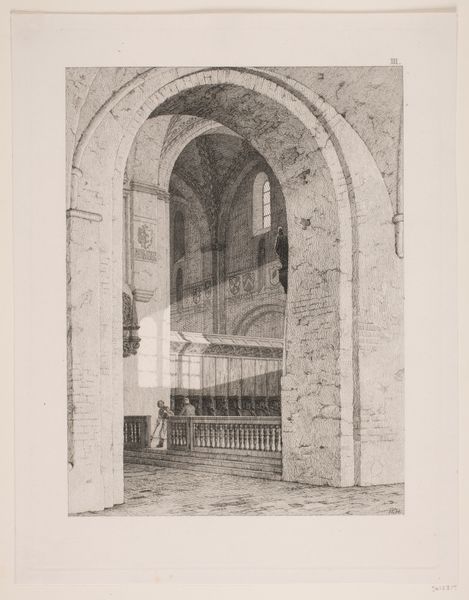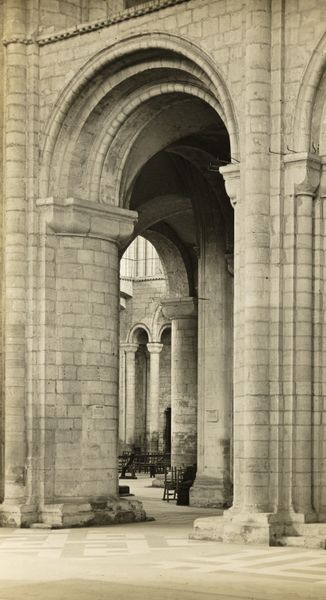
Ely Cathedral- A Memory of the Normans c. 20th century
0:00
0:00
photography, architecture
#
medieval
#
sculpture
#
landscape
#
photography
#
geometric
#
england
#
monochrome photography
#
architecture
#
monochrome
Dimensions: 7 7/8 x 5 1/8 in. (20 x 13.02 cm) (image)
Copyright: No Copyright - United States
Editor: So, this is Frederick H. Evans' "Ely Cathedral- A Memory of the Normans," taken around the turn of the 20th century. It's a photograph focusing on the interior architecture of the cathedral, mostly in monochrome. I am immediately drawn to how the light creates such strong geometric shapes. How do you interpret this work? Curator: This image, for me, is deeply connected to the historical power structures embedded within religious architecture. Evans wasn't just capturing a building; he was documenting a space built on centuries of cultural dominance and, often, social oppression. The Norman conquest itself was an act of violent cultural and political subjugation. Does seeing the photograph in monochrome make you consider how the aesthetic choices speak to larger societal attitudes? Editor: I hadn't thought about the connection to Norman power that way, actually. The choice of monochrome definitely adds to a sense of timelessness and solemnity, almost distancing the viewer from a specific era. Is he trying to say something about that power? Curator: Precisely! And let’s not forget that photography itself, at that time, was emerging as a powerful tool for documentation and, arguably, social commentary. Evans' careful composition, those weighty pillars, can be interpreted as symbolizing the enduring strength and influence of the Church and the State. Does the fact that there are barely any people contribute, maybe, to an attitude of coldness and dehumanization, which is very apparent? Editor: Yes, that definitely gives the scene a rather austere and imposing feeling! Seeing the grand architecture without human figures really amplifies the building's presence and, by extension, its power. Curator: Exactly. Think about how that power would affect communities of color. This type of imagery helps maintain racialized dominance as white western canon of art becomes universalized. These structures legitimize colonial ways of knowing, being, and defining beauty. Now how can we resist? Editor: Wow, that's a powerful way to frame it. I’ll definitely remember that next time I'm looking at architectural photography. Curator: Me too. This lens always informs how I understand my own presence within institutional space.
Comments
No comments
Be the first to comment and join the conversation on the ultimate creative platform.
